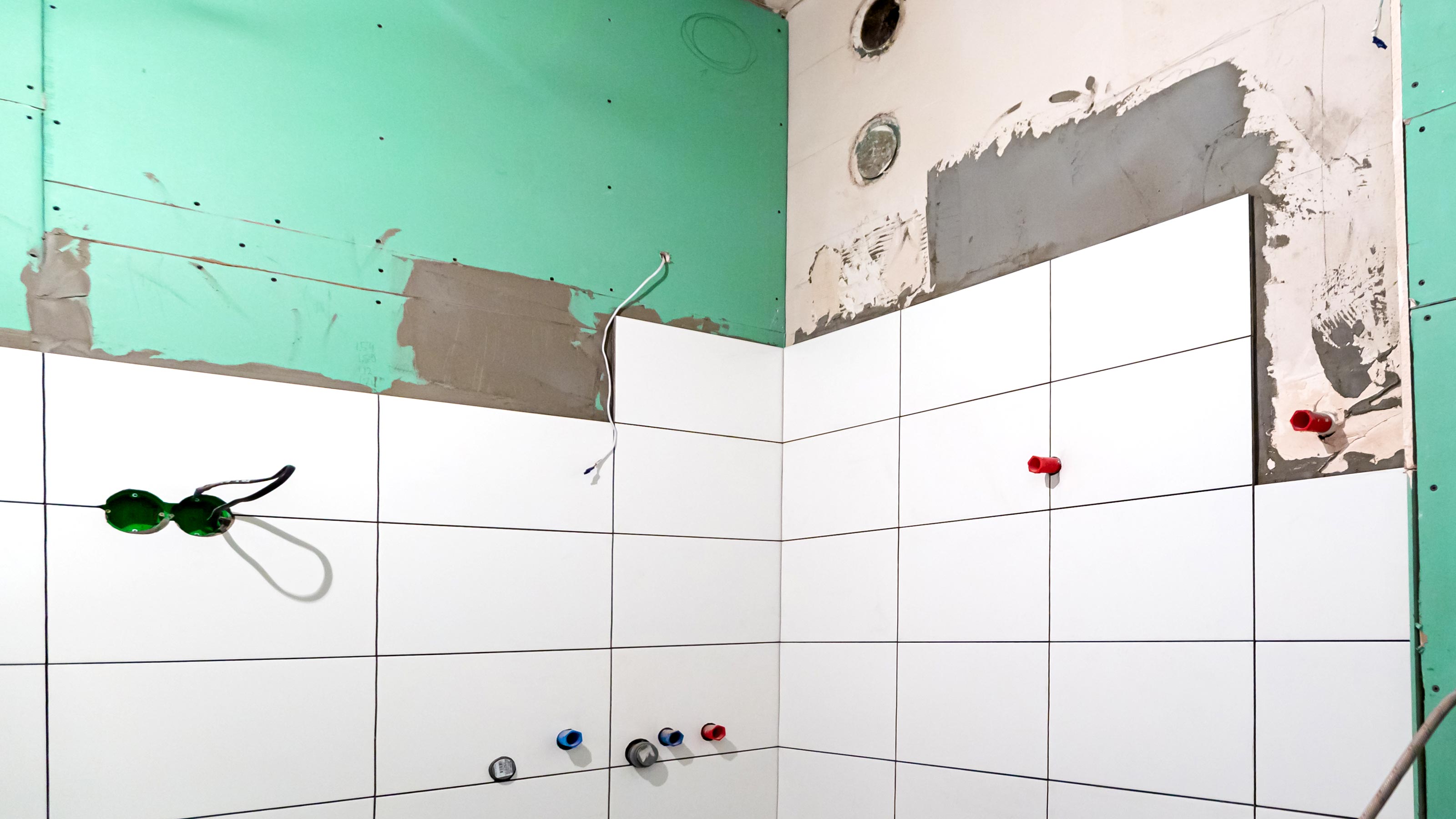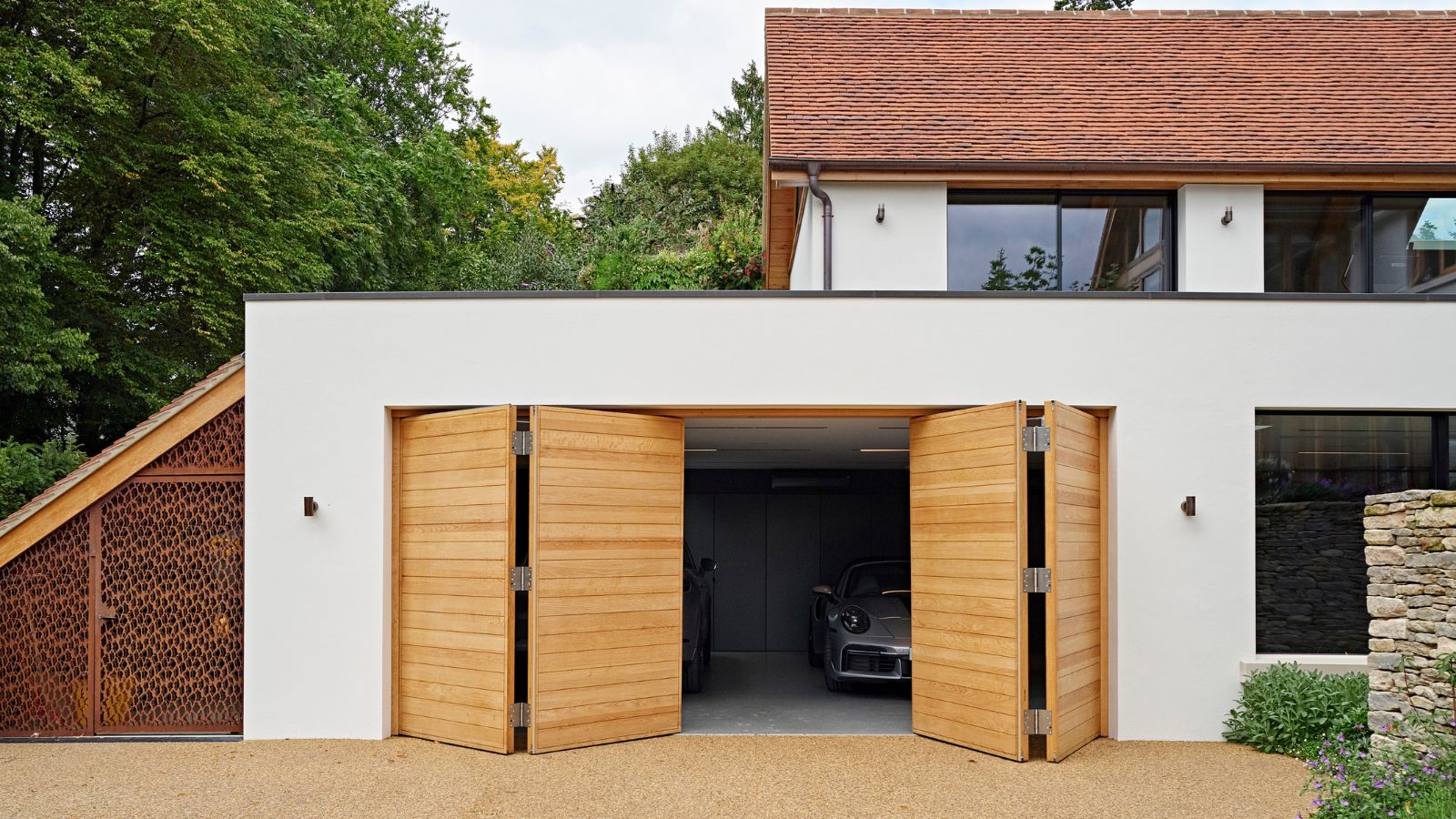Tiling onto plasterboard: Here's how to do it and what you need to know
Tiling onto plasterboard is similar to tiling onto plaster or tile, but you need to get your prep and process right. A couple of pros reveal their tips

Is tiling onto plasterboard as easy as tiling onto a plastered wall? Yes, the principle is effectively the same but with an added bonus as Stephen Russell of Ashley Cross Tiling explains: “Tiling onto plasterboard is a cost-effective option compared to tiling onto plaster.” Why? Because you don’t need to pay a plasterer to skim the walls first.
“It can be used in most situations in kitchens and bathrooms when tiling a wall, but where water is being used in abundance, i.e. shower areas and wet rooms, you need to waterproof,” adds Russell. In the latter case, tanking is required and it might be better to choose an alternative like a cement-based tile backer board.
Here, we explain how to tile onto plasterboard, and answer your questions.
Tiling onto plasterboard: what you need to do
To ensure a good strong finish you will need to prepare and prime the plasterboard properly.
1. Prepare plasterboard
Plasterboard should be dry and securely fixed to the wall or frame before you start tiling. If it isn’t securely fixed, sort by adding more plasterboard screws, but don’t overtighten.
Also ensure that any screw heads are not protruding above the surface of the plasterboard. For corners and joints use a joint tape and cover with a thin coat of adhesive and leave to dry.
2. Prime the plasterboard
The final preparation step is to apply an acrylic-based primer such as BAL Prime APD to help prepare the plasterboard for the tile adhesive. Follow the manufacturer's instructions and apply with a roller or brush and leave to dry.
3. Addressing wet areas
Tiling onto primed plasterboard is not recommended in wet rooms or showers. You can, but it won't last as long as other dry areas. You need to take a few extra steps to help stop any water getting into the plasterboard.
First you need to waterproof the plasterboard in a process known as tanking. You can purchase a tanking or waterproofing kit such as the Mapei Shower Proofing Kit. This contains a primer, coating and waterproof jointing tape.
Harriet Goodacre, Tile Consultant at Topps Tiles explains the process: “Ensure you reinforce all board joints and internal corners using a suitable alkaline joint tape, applying a thin coat of adhesive to the tape as well as the rest of your surface before tiling."
Once you have sealed and waterproofed the plasterboard, to finish Goodacre suggests: "Finally, make sure the adhesive you use is suitable for a wet environment, such as the BAL Rapid Flex Fibre Plus. Once you’ve done that, you’re ready to tile!”
Should I use moisture resistant plasterboard?
You can use moisture-resistant plasterboard, but it still needs to be primed and sealed properly to help keep it waterproof.
In fact, the British Standard for wall and floor tiling BS 5385 – more specifically Part 1:2018 – now recommends that plasterboard, including moisture-resistant plasterboard, is generally unsuitable for wet areas unless additional protection in the form of a waterproofing tanking system is used.
Do I need to skim plasterboard before tiling?
No you don’t need to — you can tile straight onto new dot and dab plasterboard or a stud wall without skimming the plasterboard. But, you can skim the plasterboard if you want to improve watertightness.
However, if you decide to skim the plasterboard before you tile you will need to consider the weight of adhesive and tiles. Standard skimmed plasterboard can only hold 20kg per square metre compared to bare plasterboard which holds around around 50% more in weight.
This means if you are looking to use larger, heavy tiles you may be better off tiling straight onto plasterboard or using an alternative such as a backer board. But make sure to check the weight before you start. If you are using standard ceramic tiles these should work on both bare plasterboard and skimmed plasterboard.
Which side of plasterboard do you tile on?
Plasterboard has a front and back and it's the front of the plasterboard where your work needs to be done. How can you tell which is the front where you need to tile?
Gary Blackburn, Plaster Support Manager at Saint Gobain explains how: “Any plastering, tiling or artex etc should be carried out on the face of the board. The back of the board will have print on and you can see where the paper is wrapped round from the face and stuck to the paper that is laid on the back of the board.”
Can I tile over painted plasterboard?
While you can paint straight onto plasterboard it’s not recommended that you tile over painted plasterboard.
But, if you are going to tile a painted surface you will need to prep it before you apply any adhesive or tiles. You need to remove as much of the paint as possible. This is best done with a sander or sandpaper.
But you need to make sure that you don't start compromising the surface of the plasterboard. Once this happens you seriously need to think about replacing it. Once sanded you will need to add an acrylic primer to seal the surface before tiling.
Get the Homebuilding & Renovating Newsletter
Bring your dream home to life with expert advice, how to guides and design inspiration. Sign up for our newsletter and get two free tickets to a Homebuilding & Renovating Show near you.
Steve Jenkins is a freelance content creator with over two decades of experience working in digital and print and was previously the DIY content editor for Homebuilding & Renovating.
He is a keen DIYer with over 20 years of experience in transforming and renovating the many homes he has lived in. He specialises in painting and decorating, but has a wide range of skills gleaned from working in the building trade for around 10 years and spending time at night school learning how to plaster and plumb.
He has fitted kitchens, tiled bathrooms and kitchens, laid many floors, built partition walls, plastered walls, plumbed in bathrooms, worked on loft conversions and much more. And when he's not sure how to tackle a DIY project he has a wide network of friends – including plumbers, gas engineers, tilers, carpenters, painters and decorators, electricians and builders – in the trade to call upon.

